Igreja de São Francisco in Évora
St. Frances Church
by
Kathy Sullivan
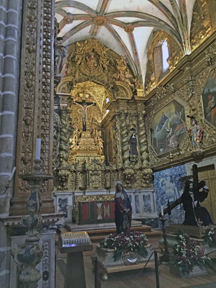 Summary: While visiting Évora, a visit to the large St. Francis Church (Igreja de São Francisco) should be included. The facility began in the early 1200s as a convent and a church. From the late 1200s and first half of the 1300s, the convent was treated as a palace by the Kings. This continued into the 1500s.
Summary: While visiting Évora, a visit to the large St. Francis Church (Igreja de São Francisco) should be included. The facility began in the early 1200s as a convent and a church. From the late 1200s and first half of the 1300s, the convent was treated as a palace by the Kings. This continued into the 1500s.
The Igreia de São Francisco is separated into several parts. Visitors can choose to visit the Bones Chapel, Museum Centre and the Nativity Scenes Exhibition. St. Francis Church is also accessible. After our admission we walked to our first destination the Bone Chapel.
Capela dos Ossos (The Bone Chapel)
Unfortunately for our tour group, the day was rainy, but perhaps fitting for our visit to the church which has a special chapel dedicated to skulls and bones. Capela dos Ossos (the Bone Chapel) has human bones covering the walls of the chapel. A few people in our group appeared to be taken aback by the sight of the displayed bones. For some it was a fascination; others were subdued. The silence was overwhelming. There was a sense of eeriness yet an almost bizarre intrigue.
A plaque describes the Bone Chapel: “Built in the first half of the 17 century, as an extension of the Chapter House of the convent of São Francisco, the Chapel of the Bones is an invitation to reflect on the transitory nature of the human condition, summarized in the words above its entrance: WE BONES HERE, FOR YOURS AWAIT. The decoration of the ceiling, dating from 1810 and full of symbols, allegories and quotations from the Holy Scriptures, adds the affirmation of another Life in the splendour of the glory of God.”
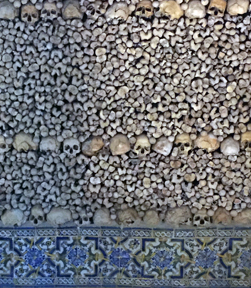
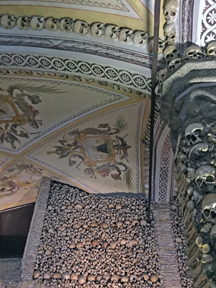
Museological Nucleus
There is plenty to be seen in the church without a stop at the Capela dos Ossos. Another area is the the Museological Nucleus, a museum-like floor with numerous rooms showcasing paintings, sculptures and religious artifacts. The Museological Nucleus was created in 2014-2015 from the original dormitory of the friars.
Nativity Sets
Another floor was devoted to a large display of nativity scenes. This immense set of nativity sets is named the Canha da Silva Collection. The collection is a private collection by Major-General Fernando Canha da Silva and his wife. A sign notes that, “The exhibition of nativity scenes aims to follow in the steps of Franciscan spirituality, since it was St Francis of Assisi who began the tradition of recreating the scene of the Birth of Christ, in the Italian village of Greccio, at Christmas 1223.” The nativity scenes range in size from small enough to fit in one’s hand to much larger. Another unusual aspect of the nativity sets are the various shapes used in the creation of the scenes. Outside on a narrow deck a large nativity scene overlooks the town of Évora.
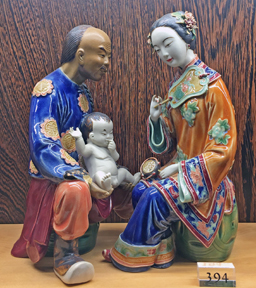
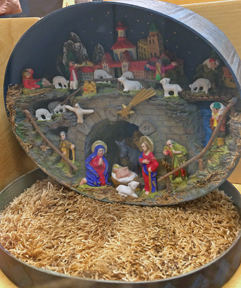
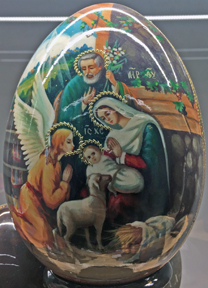
On one floor of the complex we saw several blue and white tiles depicting religious scenes and the crucifixion of Christ.
Adjacent to all of these is the church itself. The high elevated ceiling is crossed with white beams and decorated with gold. Small chapels can also be seen. Everything involving the church was ornate, reminding one that this was once used as a palace for kings.
When in Évora, take time to visit Igreja de São Francisco. If you visit the Bone Chapel, reflect on the nature of the human condition.
Article written September 2018
